Suited to small gardens but equally at home in larger landscapes, the paperbark maple is sure to become a favorite feature in your garden.
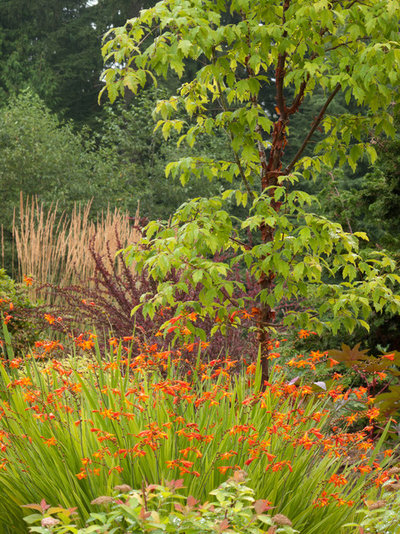
Le jardinet
Botanical name: Acer griseum
Common name: Paperbark maple
USDA zones: 4 to 8 (find your zone)
Water requirement: Water regularly until established
Light requirement: Full sun to partial shade
Mature size: 18 feet tall and 15 feet wide
Benefits and tolerances: Tolerates both clay and sandy soil; no pruning is necessary
Seasonal interest: Year-round
When to plant: Ideally in fall or spring; I have successfully planted this in August with daily irrigation.
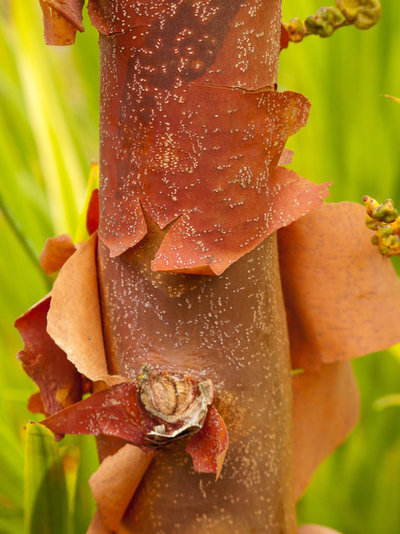
Le jardinet
Distinguishing traits.- Striking cinnamon-colored exfoliating bark
- Beautiful fall color
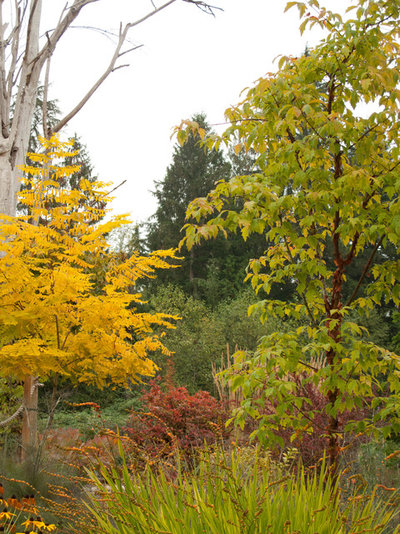
Le jardinet
How to use it. Play off the rich bark color by surrounding this maple with foliage and flowers in sunset shades of orange, gold and burgundy.
Orange
montbretia (Crocosmia) look beautiful exploding from the base — even their seed heads form an exciting partnership, as seen here.
Avoid obscuring the tree with evergreen plants. Its bark is one of the highlights of the winter landscape.
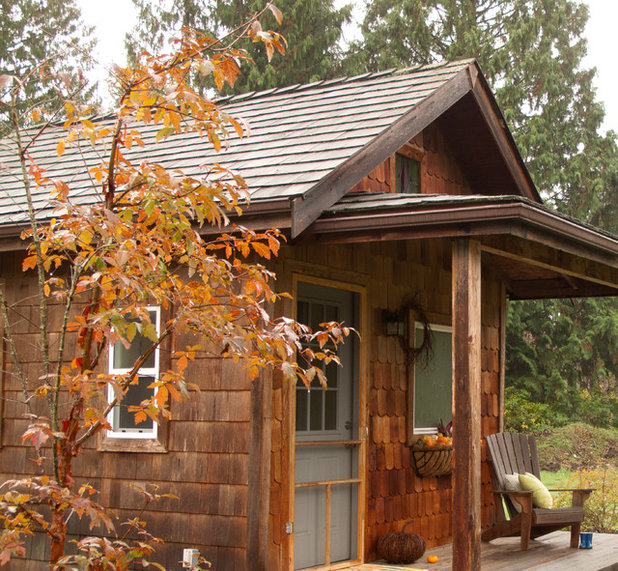
Le jardinet
Consider the backdrop against which the tree is seen. In this photograph the warm cedar shingles are a perfect foil for the fall foliage and bark.
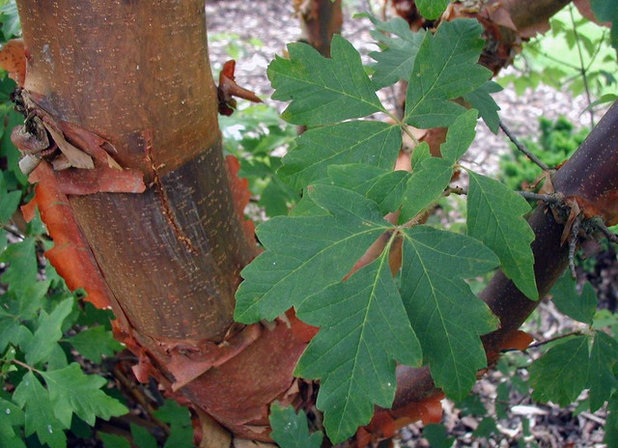 Planting notes.
Planting notes.- Dig a hole as deep as the root ball and twice as wide.
- Amend the soil you have removed with about 20 percent well-rotted compost.
- Add some bonemeal to the planting hole and mix it in — this promotes root growth.
- Add the tree to the hole and backfill carefully, tamping down gently.
- Water thoroughly.
- If you feel staking is necessary, be sure to allow some movement — this actually helps promote stronger roots.
- Keep the tree well watered for the first two years; after that just water during prolonged dry spells.





